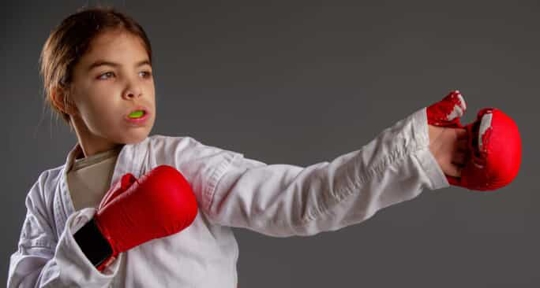What is a mouthguard?
A mouth guard also known as a mouth protector, helps reduce injuries to the teeth, lips, and tongue following a blow to the face during sports or play. A mouthguard is made of soft plastic and designed to cushion the teeth avoiding tooth fracture and cuts or lacerations to the lips and tongue.
Why should my child wear a mouthguard?
Injuries to the face and mouth are common in sports such as basketball, soccer, football, and hockey. Contact or collision sports have the greatest risk of injury, but non-contact sports, such as gymnastics or skating can pose a risk. Regular wearing of a mouth guard during these activities reduces the risk of injury.
Injuries can lead to teeth being completely knocked out or partially broken leading to problems eating, talking, and smiling and ultimately complex dental work.
When should my child wear a mouthguard?
Seek the advice of your dentist, pediatric dentist, or pediatrician before your child engages in sports or other activities that increase the risk of injury. Mouthguards should be regarded as an essential item of athletic gear and worn from an early age.
What types of mouthguards are available?
The ideal mouth guard is custom-made under the supervision of a dentist. Custom-made mouthguards are professionally fitted to the child’s individual characteristics giving a comfortable fit and ease of talking and breathing.
Other mouth guards can be purchased in sporting goods or drug stores. One type can be fitted at home by softening in boiling water and shaped to the child’s mouth. The least effective type is preformed and ready to wear, but may not fit very well.
Generally, any mouthguard is better than no mouthguard at all!
How should I care for my child’s mouthguard?
Caring for a mouth guard requires:
- Rinsing in cool soapy water before and after each use,
- Between games keeping the mouthguard clean and dry in a sturdy container with vents and separate from wet or damp clothing to prevent molds and bacteria from growing
- Avoiding direct sunlight and hot water (avoid the dishwasher!)
- Remembering to have the mouth guard examined at each dental check-up
How often should I replace my child’s mouthguard?
A mouthguard should be replaced if it shows signs of wear or damage or has become ill-fitting. Due to the rapid growth of a child’s face and mouth, and the changing dentition as permanent teeth erupt, mouth guards may require regular replacement if they are to provide maximum protection. Always take the mouth guard when your child has a dental visit. Your dentist or pediatric dentist will be able to advise on its fit and safety.
What to do if your child has an accident and loosens or knocks out a tooth
If it’s a baby tooth, console the child, and apply gentle pressure to any bleeding. Bleeding often looks worse than it is as the saliva dilutes the blood and makes it look a greater volume.
If it’s a permanent tooth, call your pediatric dentist right away and seek their individualized advice. Generally, if a permanent tooth is knocked out rinse it gently in cold water (no detergents, disinfectants, etc.) and if possible replace it in its original tooth socket. If not possible, place in a container of cold milk. In either event, visit a dentist as soon as possible.
Next steps
ProHEALTH Dental office can arrange for a pediatric dentist to examine your child and provide individualized advice about the need for a mouthguard. Request an appointment!

